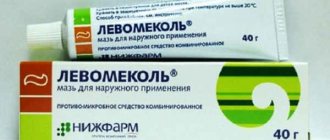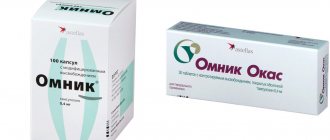Release form and composition
Cardiket is produced in the form:
- Extended-release tablets - round white flat tablets with a chamfer, a score, engraved “IR” above and “20”, “40” or “60” below the score on one side, convex with an engraving “SCHWARZ PHARMA” on the other side (in blister packs contour 10 pcs.);
- Long-acting capsules - size 1, gelatinous light brown hard, filled inside with granules from white to white with a yellow tint, odorless (in blister packs of 10 pcs.).
Auxiliary components:
- Tablets 20 mg – magnesium stearate, polyvinyl acetate, lactose monohydrate, talc;
- Tablets 40 and 60 mg – polyvinyl acetate, talc, lactose monohydrate, magnesium stearate, potato starch;
- Capsules - lactose, poly(O-ethyl) cellulose, sugar beads, talc, shellac.
Composition and release form
The medication is produced in two dosage forms - tablets and sustained-release capsules. Round white Kardiket tablets are packaged in blisters of 10. Each pack contains from 2 to 5 blisters, instructions. The second form of release is brown gelatin capsules containing small white granules. Packaged in cellular contour packages of 10 pcs. Instructions for use are included. Chemical composition of Cardiket:
| Release form | Active components | Excipients |
| tablets, 1 pc. | isosorbide dinitrate (20 mg) | magnesium stearate, polyvinyl acetate, talc, lactose monohydrate |
| tablets, 1 pc. | isosorbide dinitrate (40 or 60 mg) | polyvinyl acetate, potato starch, talc, lactose monohydrate, magnesium stearate |
| capsules | isosorbide dinitrate (120 mg) | lactose, cellulose, poly(O)-ethyl, sugar beads, talc, shellac. |
Contraindications
Contraindications to the use of the drug are:
- Severe arterial hypotension;
- Severe aortic and/or mitral stenosis;
- Traumatic brain injury;
- Acute vascular insufficiency (vascular collapse, shock);
- Hypovolemia;
- Acute myocardial infarction with severe arterial hypotension;
- Hemorrhagic stroke;
- Angle-closure glaucoma with high intraocular pressure;
- Children and adolescents up to 18 years of age;
- Concomitant use of phosphodiesterase type 5 inhibitors;
- Hypersensitivity to the active substance or auxiliary components of the drug.
Relative contraindications for Cardiket:
- Cardiac tamponade;
- Brain hemorrhage;
- Hypertrophic obstructive cardiomyopathy;
- Severe anemia;
- Toxic pulmonary edema;
- Constrictive pericarditis.
With caution and with careful medical supervision, the drug is prescribed to elderly patients, as well as in the following cases:
- Tendency to dysregulation of blood circulation due to low blood pressure (orthostatic dysregulation of blood circulation);
- Diseases accompanied by increased intracranial pressure;
- Severe liver failure;
- Severe renal failure;
- Hyperthyroidism;
- Increased peristalsis of the gastrointestinal tract;
- Malabsorption syndrome.
During pregnancy and during breastfeeding, the use of the drug is permissible when the expected effect of therapy significantly exceeds the possible risk to the developing fetus or infant.
Directions for use and dosage
Capsules and tablets are taken orally, regardless of food intake, with a small amount of liquid. If necessary, the tablet can be split in half by placing it on a hard surface with the break line facing upward and pressing down with your thumb.
Tablets 20 mg are prescribed 1 pc. twice a day, with a possible increase in the number of doses up to 3 times a day.
Tablets 40 mg at the beginning of therapy are prescribed 1 piece. 1 time a day or half a piece 2 times a day. If the therapeutic effect is insufficient, the frequency of doses can be increased to 2 times a day. The second tablet must be taken no later than 8 hours after the first.
60 mg tablets are taken one at a time at the beginning of therapy. once a day, with a possible increase in the number of doses up to two times a day. The second tablet should be taken no later than 8 hours after the first.
Cardiket capsules are prescribed 1 pc. per day.
Therapy should be started with the lowest doses and gradually increased to the maximum effective dose. The duration of treatment is determined by the doctor individually. The drug is intended for long-term use; you should not abruptly stop taking it without consulting a doctor.
Form of release of the drug and composition
According to the instructions for use, “Kardiket” is produced in the form of round white tablets, characterized by a prolonged action. They are convex on one side, have the inscription SCHWARZ PHARMA, and on the other - with a chamfer, notch and engraving, they are flat. There are ten pieces in one blister, two or five blisters in a cardboard pack. One tablet contains: isosorbide dinitrate (active substance), as well as auxiliary elements: polyvinyl acetate, potato starch, lactose monohydrate, magnesium stearate, talc.
What else does the instructions for use for Cardiket tell us? Prices and analogues will be presented at the end of the article.
Side effects
The use of Cardiket may cause side effects from certain body systems:
- Headache at the beginning of therapy, which usually goes away after a few days with further use of the drug. In some cases, at the first dose or when the dose of the drug is increased, a pronounced decrease in blood pressure is observed, especially when the patient gets out of bed, which may be accompanied by tachycardia (paradoxical bradycardia), dizziness, lethargy and a feeling of weakness. Rarely, with a pronounced decrease in blood pressure, there is an increase in the symptoms of angina pectoris. Extremely rarely - collaptoid states, sometimes with bradycardia and sudden loss of consciousness (cardiovascular system);
- Nausea, vomiting, dry mouth, belching, abdominal pain (digestive system);
- Drowsiness, stiffness, decreased ability for rapid motor and mental reactions, blurred vision, cerebral ischemia (central nervous system);
- Skin rash (allergic reactions);
- Exfoliative dermatitis, facial skin hyperemia, development of tolerance to other nitrates, including cross tolerance (other reactions).
Side effects of Cardiket
In reviews of Cardiket, there are reports that during drug therapy, adverse reactions from organs and systems of the body may occur:
- Central nervous system: blurred vision, drowsiness, stiffness, slowed psychophysical reactions, ischemic disorders;
- Cardiovascular system: at the beginning of therapy, nitrate headaches may occur, which disappear after a few days of regular use of the medication. Possible increased heart rate, hypotension, orthostatic collapse, feeling of weakness, lethargy, paradoxical bradycardia and angina pectoris, loss of consciousness due to a decrease in heart rate;
- Gastrointestinal tract: nausea, dry mouth, vomiting, belching, epigastric pain.
Reviews of Cardiket indicate that allergic reactions may occur in the form of skin rash, itching, urticaria, redness, and exfoliative dermatitis. It is also possible to develop addiction to the drug, which leads to a decrease in its therapeutic effectiveness.
special instructions
The drug is not used to relieve angina attacks.
During therapy, monitoring of blood pressure and heart rate is necessary.
To prevent a decrease in the effectiveness of the drug, it is necessary to avoid its constant use in high doses.
In patients with primary pulmonary diseases, temporary hypoxemia may occur when taking the drug due to the relative redistribution of blood flow to hypoventilated alveolar zones. In patients with coronary heart disease, this can lead to transient myocardial ischemia.
The drug should be used only under the condition of careful clinical monitoring of the patient in cases of acute myocardial infarction or acute heart failure.
Abrupt withdrawal of Cardiket should be avoided (to prevent angina attacks).
If an attack of angina occurs while using the drug, fast-acting nitrates should additionally be used to relieve it.
To prevent an unwanted decrease in blood pressure, the dose of the drug should be selected individually.
During treatment, dizziness may occur and blood pressure may decrease in the following cases:
- Abrupt transition to a vertical position from a “sitting” or “lying down” position;
- Ethanol consumption;
- Exercising and hot weather.
With a sharp decrease in blood pressure, angina pectoris, ischemia, and even myocardial infarction and sudden death may increase.
The severity of headaches that occur when using the drug can be reduced by reducing its dose or simultaneous use of menthol-containing drugs.
To prevent the development of tolerance to other nitrates, it is necessary to observe a daily (nightly) “nitrate-free interval” for 8-12 hours. In most cases, such therapy is more effective than continuous therapy.
With frequent use of Cardiket without intervals free from use, addiction may occur, requiring an increase in dose.
If blurred vision or dry mouth occurs and persists while taking the drug, it is recommended to stop treatment.
During the period of use of the drug, you should not drink alcohol.
During therapy, patients should refrain from engaging in potentially hazardous activities that require increased attention and speed of psychomotor reactions.
Strengthening the hypotensive effect of the drug is possible when taken simultaneously with:
- Other vasodilators and antihypertensive drugs;
- Beta-blockers;
- Blockers of slow calcium channels;
- Phosphodiesterase 5 inhibitors, used to treat erectile dysfunction;
- Neuroleptics and tricyclic antidepressants;
- Novocainamide;
- Quinidine;
- Ethanol.
Please note that Cardiket:
- May increase the concentration of dihydroergotamine in the blood (increase its hypotensive effect);
- Increases the likelihood of increased intraocular pressure when used with m-anticholinergic blockers;
- Helps improve coronary circulation when used in combination with acetylsalicylic acid.
Absorption of the drug into the gastrointestinal tract is reduced by adsorbents, coatings and astringents.
The antianginal effect of the drug can be reduced by sympathomimetic agents and alpha-blockers.
A combination of Cardiket, amiodarone and other drugs (slow calcium channel blockers, propranolol) is rational for the treatment of coronary heart disease.
Dosage of the drug and method of administration
Long-acting tablets (20 mg) are prescribed one tablet twice a day. If the need for medication increases, the dosage can be increased to one pill three times a day.
Tablets (40 mg) are prescribed at the beginning of treatment, one tablet once a day or half a tablet twice a day. If the therapeutic effect is insufficient, the dosage can be increased to one pill twice a day. The second tablet is taken no later than eight hours after the previous one.
Tablets (60 mg) are prescribed at the beginning of treatment, one tablet once a day. If necessary, you can increase the dosage to one pill twice a day. No later than eight hours after the previous one, you should take the second tablet.
In the form of capsules, the drug is prescribed once a day, 120 milligrams.
Treatment should begin with minimal doses and gradually increase the dosage to the most effective one. The decision on the duration of therapy is made by the doctor. The medicine is intended for long-term use; you cannot stop taking it without consulting a specialist.
The drug is taken orally, regardless of food intake, is not chewed, and is washed down with liquid. To split a tablet in half, place it on a hard surface with the break line up and press with your thumb. It will easily split in half.










